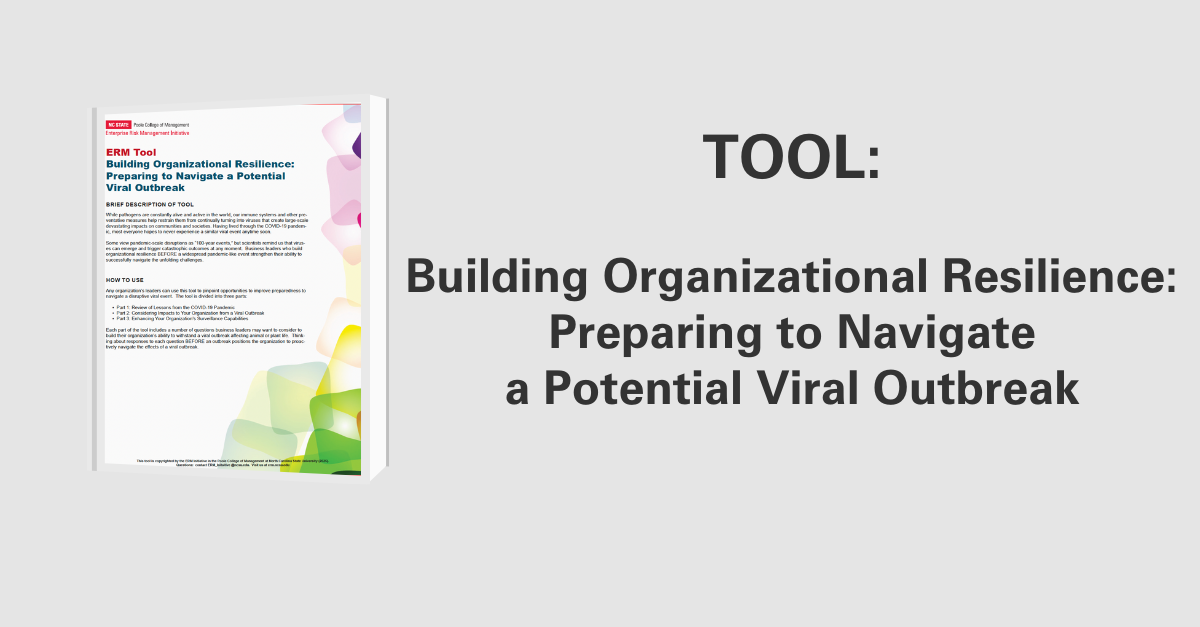Preparing for a Black Swan Event
Catastrophic Events
Black Swans are defined as rare, random, and high-impact events and are characterized to be catastrophic and broad. However, many argue these events are occurring more and more frequently: massive earthquake in Haiti (2010), coal ash spill in Tennessee (2008), and Hurricane Katrina (2005). Some skeptics believe, in hindsight, that these events should have been identified because post event investigations found warning signs that signaled such an event was likely to occur that experts failed to see in their predictions. In reality, Black Swan events still continue to be unpredictable and unpreventable. Although you can’t prepare for every scenario, but you can establish principles and protocols to be better prepared for the unexpected. A recent thought paper by Ernst & Young explains how to do that.
Principles for Preparing for and Responding to a Black Swan
The paper provides broad based principles that can be applied to any organization. Having these principles in place before the Black Swan event occurs is crucial to an effective recovery. Here is brief summary of the core principles:
- Establish response goals, assigning leadership to meet those goals and establishing reporting channels during the crisis.
- Establish immediate response goals and values in order to limit the impact before a formalized plan is developed.
- Empower local leadership and personnel to recognize and mitigate emerging catastrophic risks.
- Plan and execute redundant mitigation responses in case the primary response fails.
- Know your resources and how to use them during a catastrophe. Leaders should keep track of internal and external recourses including personnel, financial, and physical resources.
- Incorporate outside perspectives and experiences into their response strategy.
- Remain objective throughout the process when analyzing, discussing, and responding to catastrophic risks.
- Maintain the moral high ground by planning and executing responses based on what is right, rather than planning for only the company’s best interest.
- Challenge your response strategy with an independent perspective to help identify weaknesses before the Black Swan does.
Response Protocols for a Catastrophe
The paper includes some basic protocols for responding to a Black Swan. The following protocols are not designed to be a step-by-step process but rather a general basis for responding:
- Develop risk recognition criteria in order to know when and how to respond.
- Develop a quick response team led by a senior manager, typically the COO. This team should include personnel from across the business functions and external advisers. The team should concentrate on containing and minimizing the event.
- Create a response team of leaders who should assess the situation, understand the risks faced, and response goals in order to quickly initiate the correct response plan.
- Develop multiple response options and categorize them base on largest contribution toward response goals.
- Evaluate each option by considering its risk/reward and whether the organization has the capabilities to carry out the plan. Critical assumptions should be documented during this process for future reference.
- Implement the response following the guidelines and procedures previously established during pre-event planning.
- Assess continually the effectiveness of the response by making corrections as need. After the event, management should discuss lessons learned and incorporate these lessons into training and future response planning.
Conclusion
Black Swans are unpredictable but can be prepared for by establishing identification methods, response goals, and quick response strategies before the event occurs. The principles and protocols that Ernst and Young provided in this thought paper are intended to help guide your organization to establishing a response strategy. Taking this approach can provide your organization with a number of benefits including but not limited to reputation protection, a faster return normal business and minimization of the impact.
Original Article Source: “How to respond to catastrophic events | Responding to Black Swans”, EY, 2013
- Categories:
- Types:


